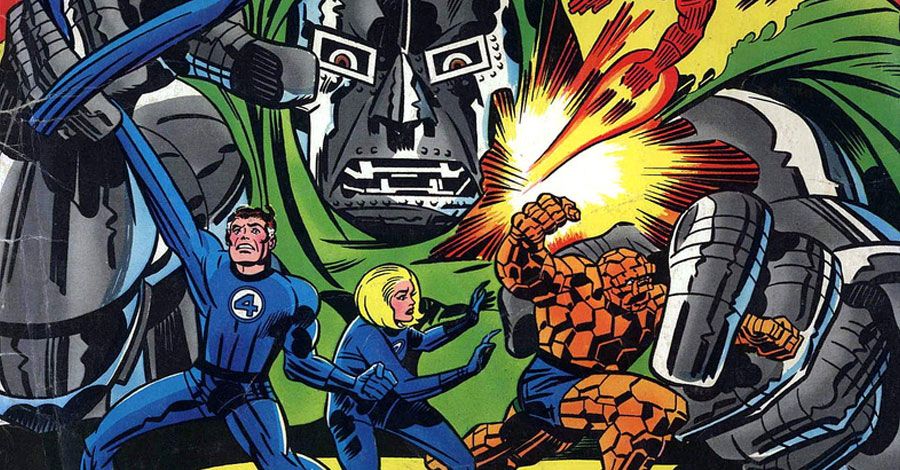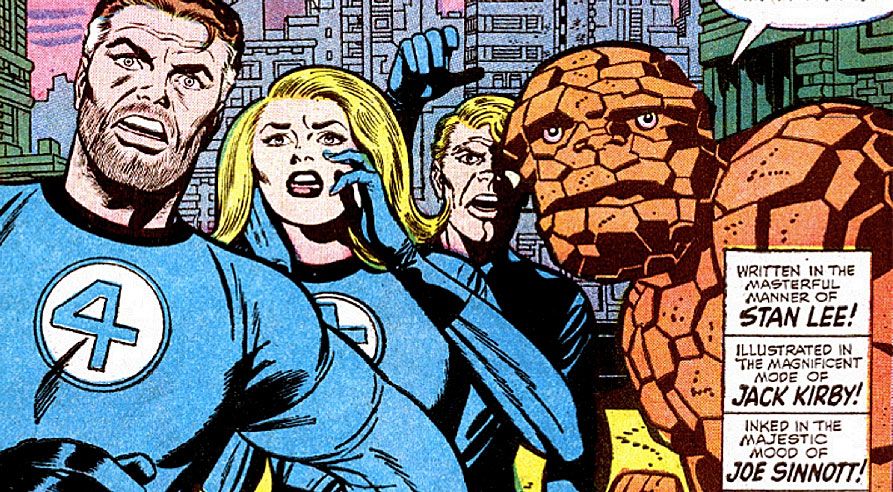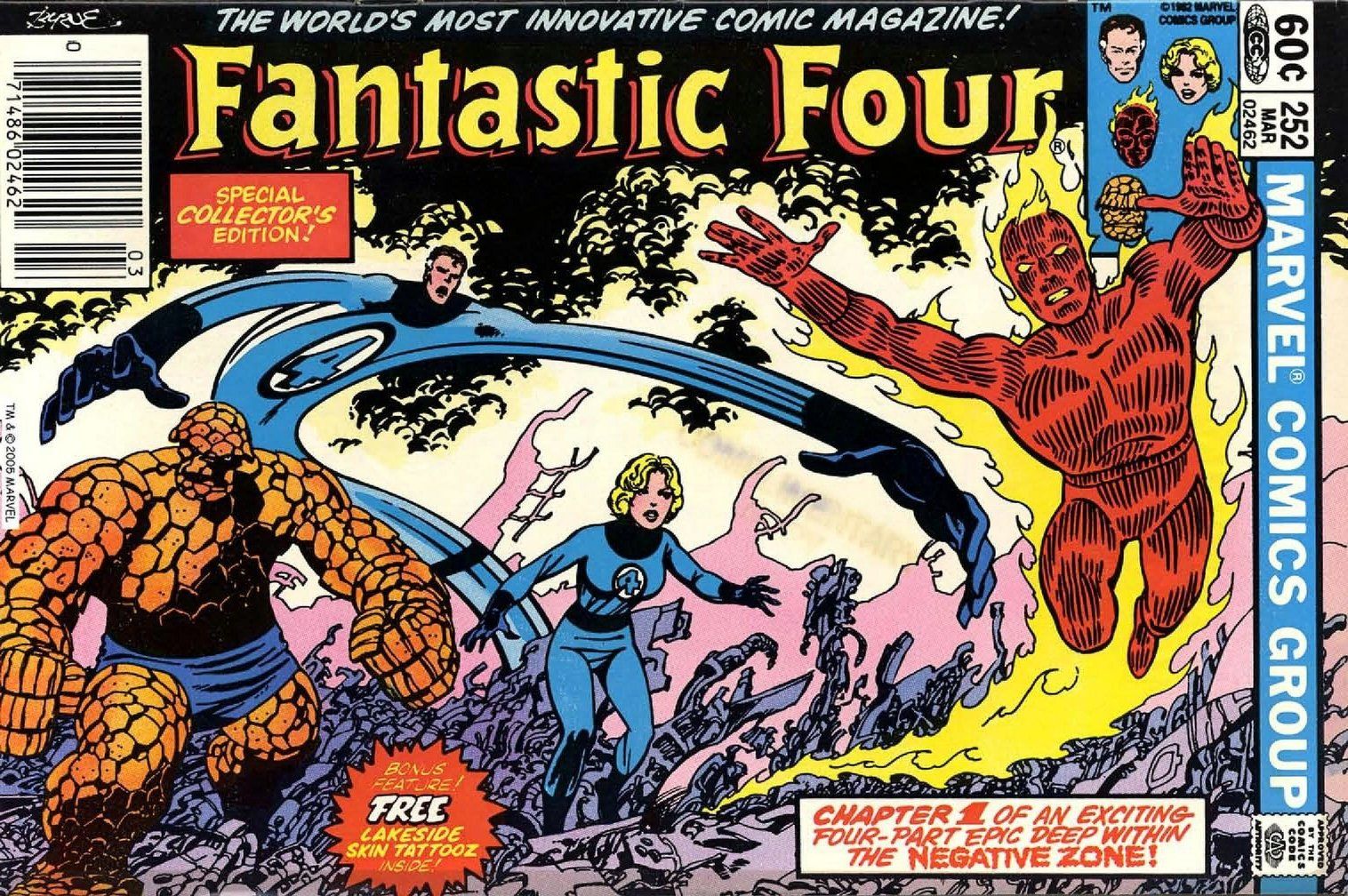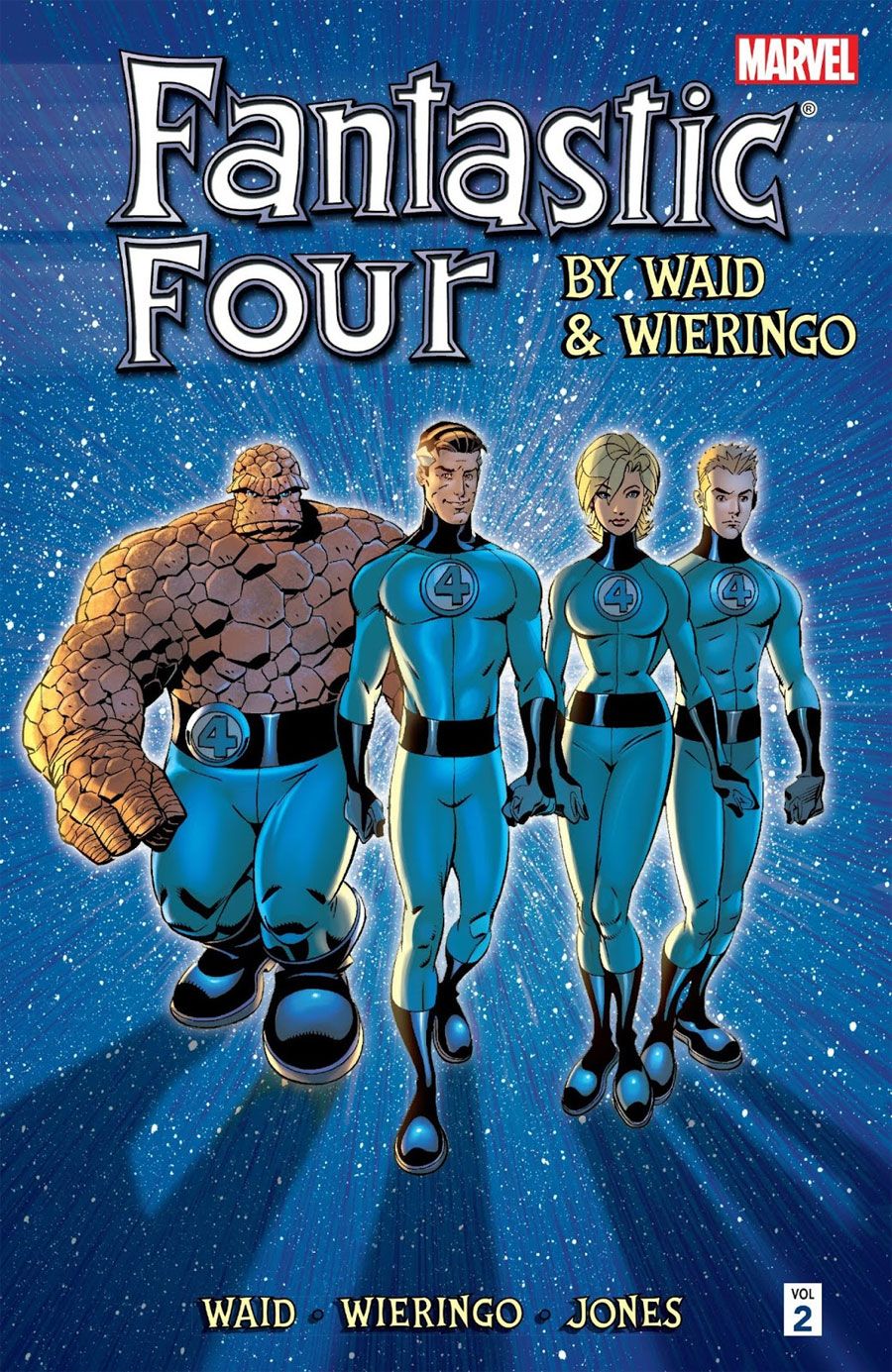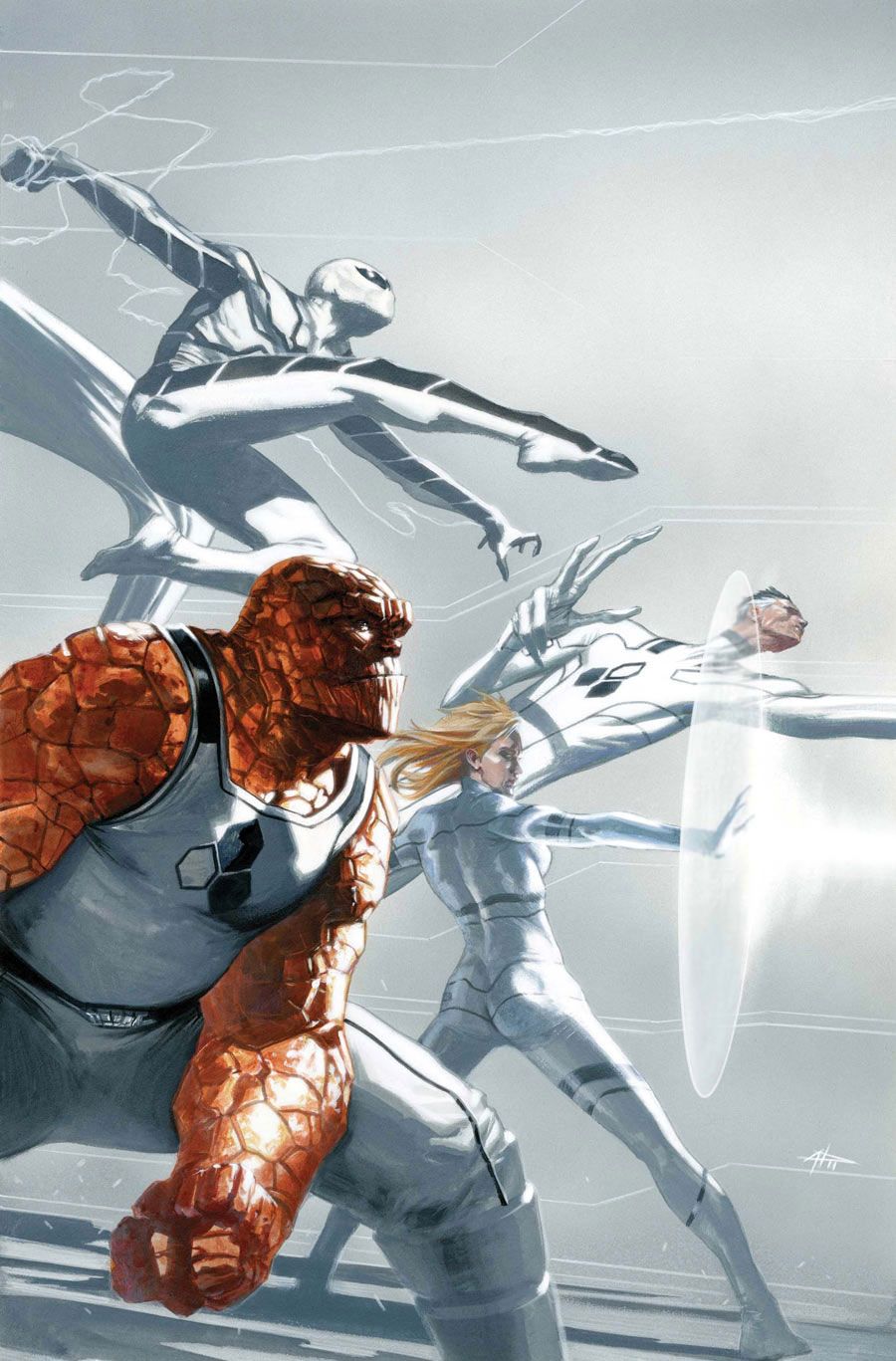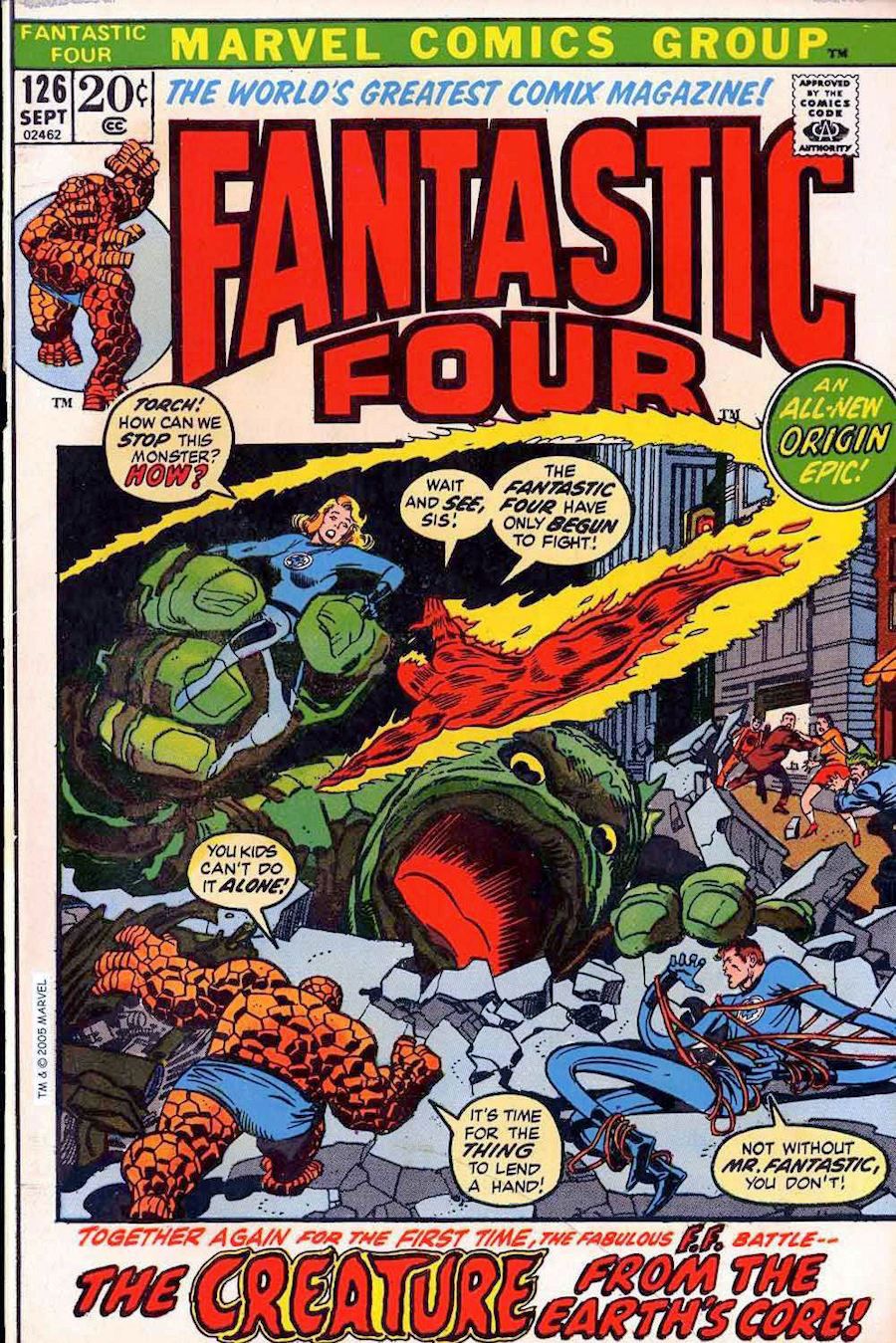The Marvel Universe as readers know it began with 1961's "Fantastic Four" #1 by Stan Lee and Jack Kirby, and since then, "The World's Greatest Comic Magazine" has been a home to some of the greatest voices in comics. Starting with Lee and Kirby's 102-issue run that birthed Mr. Fantastic, the Human Torch, the Invisible Woman, the Thing -- along with countless other characters and concepts that have resonated across the decades -- many talented writers and artists have written the series, each one adding to the legacy of Marvel's First Family.
REVIEW: "Fantastic Four" Is Super Only In Its Mediocrity
This week sees the debut of 20th Century Fox's "Fantastic Four" reboot, and while it's been met with less-than-stellar reviews, there's no arguing against the fact that the filmmakers had plenty of great FF material to look to for inspiration. There are many creatively fertile runs on the series to choose from, and here are our picks for the greatest "Fantastic Four" creative teams in the rich history of the currently dormant comic book series.
Stan Lee and Jack Kirby
Stan Lee and Jack Kirby set the foundations of the entire Marvel Universe in a 115-issue run that has never been equaled. Over a ten-year stretch, the legendary architects of imagination created the FF, Doctor Doom, the Skrulls, Galactus, the Kree, the Silver Surfer, the denizens of the Negative Zone, the Frightful Four, the Black Panther and Wakanda, the Inhumans and the Mole Man, and even revived the Sub-Mariner from his post-World War II slumber.
But even more important than the legions of classic characters the pair created, in the pages of their "FF," Lee and Kirby defined what the modern superhero comic could be. Their heroes weren't just perfect, squared jawed human specimens -- they were flawed monsters, hot-headed teenagers, frightened champions and squabbling family members. They were heroes with dreams for the future, and tragedies in their pasts. Heroes who, despite their powers, were mirrors held up to humanity. Without tan and Jack's "Fantastic Four," there is no Marvel Universe -- period.
John Byrne
John Byrne's run on the FF as writer and artist is a virtual "How To" guide on crafting superhero comics. For six years, he found new directions for the FF, fundamentally changing each member while remaining true to the vision of Lee and Kirby. Under Byrne, Ben Grimm left the team and was replaced by She-Hulk; Sue Richards went from being an invisible girl to the Invisible Woman; and Reed had to defend none other than Galactus during an intergalactic murder trial. Yet despite all of those huge changes and events, Byrne's run was all about family, as the FF experienced some of their greatest drama but emerged united.
Mark Waid
Like many comics in the '90s, "Fantastic Four experienced some hard times. But in the early 2000s, the team returned to glory at the hands of Mark Waid and the late, great artist Mark Wieringo. During the course of his run, Waid infused the series with the traditional pathos, humor and sense of high adventure that defined the Lee and Kirby era, reestablishing Reed, Sue, Ben and Johnny as explorers into the impossible. Of course, Waid balanced the fantastic with the mundane, crafting these classic characters into complex humans.
The high points of his run saw Waid script the ultimate Doctor Doom story "Unthinkable," and the introduction of God -- who happened to look just like Jack Kriby -- into the Marvel Universe. Waid and Wieringo's synergy made the team arguably the second greatest writer artist duo in FF history, balancing tradition with fresh, new directions for Marvel's First Family.
Jonathan Hickman
It's hard to imagine a bigger story than the one Jonathan Hickman told between 2009-2012 in the pages of not one but two "Fantastic Four" titles (the main "Fantastic Four" series and companion book "FF"). The epic run, illustrated by artists Steve Epting, Dale Eaglesham, Nick Dragotta, Sean Chen and many more, started with Reed Richards scanning the Multiverse to find solutions to his world's problems -- in other words, Richards wanted to solve everything. Despite such a heady concept, Hickman never lost sight of his characters' humanity, and managed to juxtapose a grounded reality with some of the most fantastic adventures and settings the four heroes have ever experienced.
The most publicized moment of the run was the death of Johnny Storm. Though the character eventually returned, the event led to the surviving FF members creating the Future Foundation, adding numerous new characters to the FF mythos -- and introducing Spider-Man to the team's roster. Most importantly, Hickman's stories, as hardcore fans often look for, "mattered," building the foundation for his subsequent work on the Avengers franchise and the current universe-shattering "Secret Wars" event.
Roy Thomas
When Roy Thomas began his "Fantastic Four" run, he had impossible shoes to fill. After ten years, Stan Lee exited the title leaving Thomas, Lee's right hand man, in charge of the book that launched the Marvel U. Under the watch of Thomas and artists John Buscema, George Perez, Rich Buckler, Joe Sinnott and more, the FF matured; in particular Sue Richards, who broke out of her role as subservient wife to Reed and struck out on her own, shocking longtime readers by leaving the team for an extended period of time and becoming a true modern woman. Thomas replaced Sue with Medusa of the Inhumans and also introduced Thundra, a very different type of female character to Marvel Universe, one who was able to go toe-to-toe with the Thing and the Hulk. Though it's often overlooked by modern readers, Thomas' run was marked by amazing stories that made sure the Marvel Universe continued to grow and thrive after the exits of its original architects.

